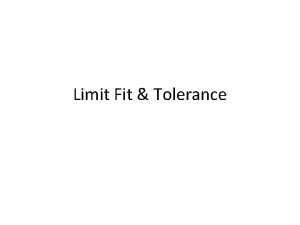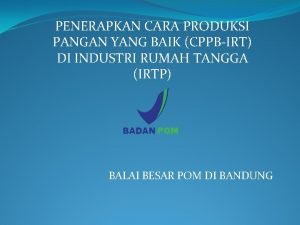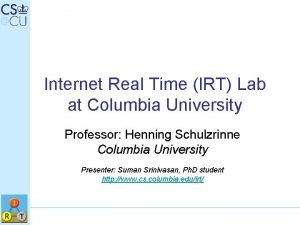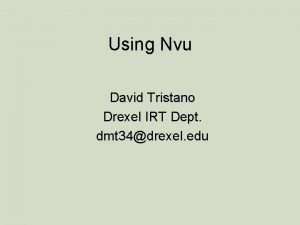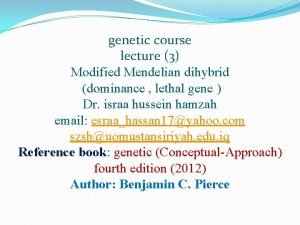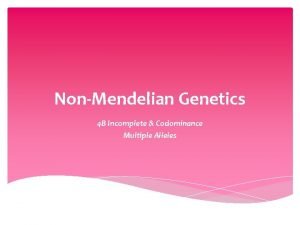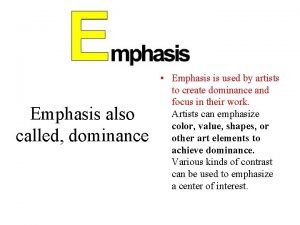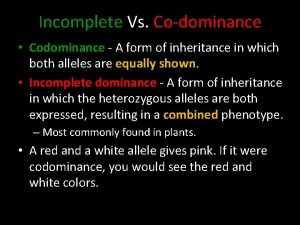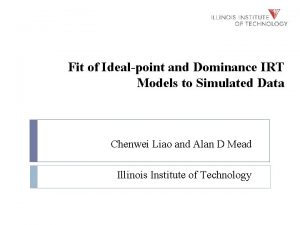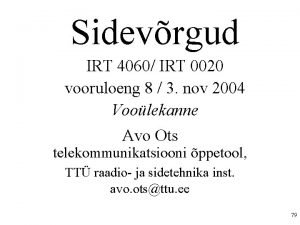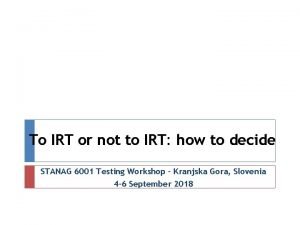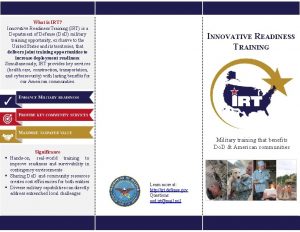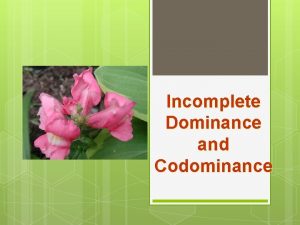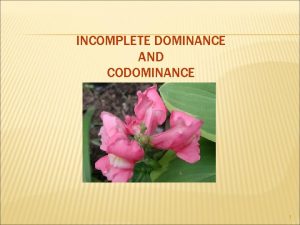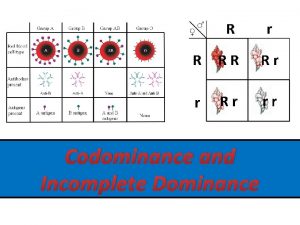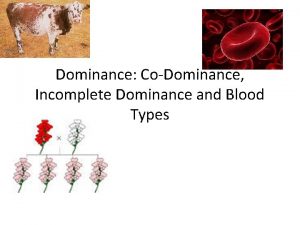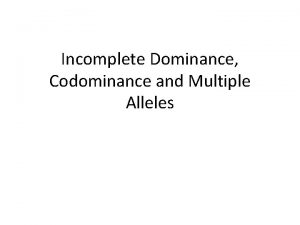Fit of Idealpoint and Dominance IRT Models to



















- Slides: 19

Fit of Ideal-point and Dominance IRT Models to Simulated Data Chenwei Liao and Alan D Mead Illinois Institute of Technology

Outline Background and Objective Hypotheses and Methods Results Discussions

Background Personality Used in personnel selection - Incremental validity to predict job performance beyond cognitive ability (Barrick & Mount, 1991; Ones et al, 1993) - Less adverse impact (Feingold, 1994; Hough, 1996; Ones et al, 1993). Model-data-fit - Need to calibrate personality traits - Use IRT models - Degree of fit depends on data structure

Background (cont. ) Item response processes – thinking of data structure IRT models and item response processes: 1) Traditional dominance IRT models: - high trait - high probability of endorsing 2) Ideal-point IRT models - similar item & trait – high probability of endorsing

Background (cont. ) Dominance Model IRF: - x: Theta (trait level) - y: Probability of endorsing Ideal-point Model IRF: - x: distance between person trait and item extremity - y: Probability of endorsing

Background (cont. ) Chernyshenko et al, (2001) - Traditional dominance IRT models have failed. Suggest to look at item response processes and Ideal-point IRT models Stark et al. (2006) - Ideal-point IRT models: as good or better fit to personality items than do dominance IRT models Chernyshenko et al. (2007) - Ideal-point IRT method: more advantageous than dominance IRT and CTT in scale development in terms of model-data-fit

Limitation of previous studies and objective of current study Limitation of previous studies - Unknown item response processes! Objective of current study 1) Investigate model-data-fit by utilizing simulation with known item response processes 2) Test the assumption that the best fit model represents data underlying structure of response processes

Current Study

Models Dominance: - Samejima’s Graded Response Model (SGRM); Ideal Point: - General Graded Unfolding Model (GGUM). Larger sample and longer test were said to be related to a better fit (Hulin et al, 1982; De la Torre et al, 2006).

Hypotheses Generating models H 1: Data generated by an ideal point model will be best fit by an ideal-point model and data generated by a dominance model will be best fit by a dominance model. H 2: The ideal point model will fit the dominance data better than the dominance model will fit the ideal-point data. H 3: The ideal-point model will fit the mixture data better than the dominance model.

Hypotheses (cont. ) Sample Sizes H 4: All models will fit better in larger samples. H 5: The GGUM model will fit relatively worse in smaller samples, as compared to simpler, dominance models. Test Lengths H 6: The GGUM model will fit relatively worse for very short tests, as compared to longer tests.

Datasets Self-Control Scale from the 16 PF Procedure: 1) Calibrate 16 PF data to get item parameters - SGRM: PARSCALE 4. 1; GGUM: GGUM 2004. 2) Generate simulated data: - models: ideal point/dominance/mixed; - sample size: 300, 2000; - test length: 10, 37; - 50 replications;

Model-Data-Fit Cross validation ratio: each item in each condition Only singles – simulation study assures unidimensionality assumption Smaller value – better fit Frequencies of ratios were tallied into 6 groups: very small (<1), small (1 -<2), medium (2<3), moderately large (3 -<4), large (4 -<5), very large (>=5).

Results overview Condition Best fitting model Dominance data generation GGUM Ideal point data generation GGUM Mixed data generation GGUM Small Sample (N=300) GGUM Large Sample (N=2000) GGUM Short Test (n=10) GGUM Long Test (n=37) GGUM

Results

Discussion (1) “GGUM fits better” - Confirm previous findings. - However, because regardless of the underlying response process, GGUM fits better than SGRM, it does not demonstrate that the response process or IRF/ORF is non-monotone. The previous assumption does not hold true. - Possible reason: Software (PARSCALE & GGUM) manifest models differently Better fit in small samples, especially for SGRM - Explanation: chi-square is sensitive to sample size

Discussion (2) Examine similarities of theta metrics - Negative correlation between theta estimates from GGUM and those from SGRM TRUE 1. 000 SGRM 0. 928 1. 000 GGUM -0. 923 -0. 995 GGUM 1. 000

Discussion (3) Scaling issue GGUM: - Reverse the estimate - Add a constant in scaling

Thanks!
 Memory allocation policy
Memory allocation policy Worst fit memory allocation
Worst fit memory allocation Maximum metal condition (mml) corresponds to the
Maximum metal condition (mml) corresponds to the Person-job fit and person-organization fit
Person-job fit and person-organization fit Cppb-irt
Cppb-irt Lori vanscoy
Lori vanscoy File processing system
File processing system Irt lab
Irt lab Irt software
Irt software Nvu tutorial
Nvu tutorial Irt to amd
Irt to amd Modal and semi modal verbs
Modal and semi modal verbs The difference between dominance and codominance
The difference between dominance and codominance Standards battles and design dominance
Standards battles and design dominance Standards battles and design dominance
Standards battles and design dominance Codominant allele
Codominant allele Examples of dominance in art
Examples of dominance in art Sociability continuum
Sociability continuum Pedigree analysis
Pedigree analysis Example of incomplete dominance
Example of incomplete dominance


